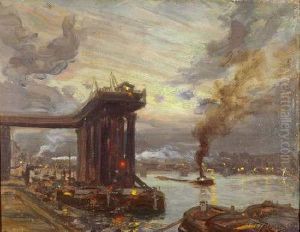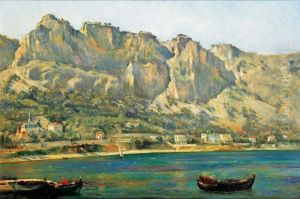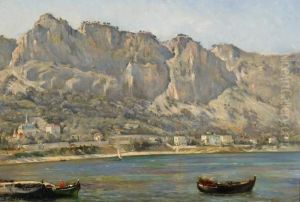Louis Beysson Paintings
Louis Beysson was a French sculptor born in 1849 in Saint-Étienne, France. While not as widely known as some of his contemporaries, Beysson's work is appreciated for its craftsmanship and contribution to French art in the 19th century. He worked during a period that was rich in artistic evolution in France, a time when arts were flourishing under various movements such as Realism, Impressionism, and the beginnings of Modernism.
Beysson was educated at the École des Beaux-Arts in Paris, which was the foremost art school in France. It was here that he would have been exposed to both classical training and the burgeoning new styles and ideas that were circulating in the art world at the time. He studied under well-known figures in French sculpture like François Jouffroy, who was recognized for his neoclassical style, and this would have influenced Beysson's early development as an artist.
Although not much is widely published about his personal life or career, Beysson's work did receive some recognition in his time. He is known to have exhibited at the Paris Salon, an official art exhibition of the Académie des Beaux-Arts in Paris, which was the main showcase for French artists to present their work. Participation and acceptance into this Salon were highly coveted and regarded as a significant achievement for any artist.
Beysson's sculptures often reflected the academic style of his era, characterized by a focus on the human form, attention to detail, and an adherence to the techniques and themes of classical art. However, the latter part of the 19th century was also a time of innovation, and it is possible that his work may have shown the influence of newer movements and stylistic changes that were emerging during his lifetime.
Louis Beysson's contributions to sculpture were cut short by his untimely death in 1895, at the age of 46. The legacy of artists like Beysson is a testament to the rich tapestry of French artistic production during this period, offering insight into the breadth of styles and skills that characterized the era. While he may not have achieved the fame of his peers, Beysson's work remains a part of the historical record and is appreciated by those who study 19th-century French sculpture.


